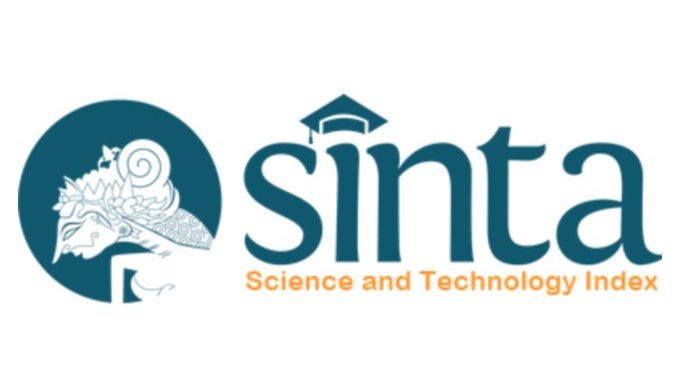Burn Injury Pattern in Waikabubak General Hospital West Sumba 2019-2021
DOI:
https://doi.org/10.55175/cdk.v51i9.1105Keywords:
Debridement, burn injury, East Nusa TenggaraAbstract
Introduction: West Sumba, East Nusa Tenggara, is known as one of the areas with limited healthcare facilities. Burn injury can happen to anyone from all sorts of backgrounds. This research was conducted to observe the pattern of burn injury in Waikabubak General Hospital. Methods: A retrospective descriptive study was conducted using medical records data at Waikabubak General Hospital from 2019-2021. Results: Thirty-five burn injuries patients were evaluated. The majority of patients were male (71%) and ranging from the age of < 2 - 12 years old (54%). Scald burns by hot water were the most common cause (54%). The extremities were the common site of injury (34%), with the mean total body surface area (TBSA) was 16.8%, and the most common complications were severe dehydration (9%) and death (9%). The main comorbid disease was epilepsy (11%), most had a length of stay of 5-10 days, with an average of 6 days, and the most frequent intervention was debridement (54%). Most patients were discharged with improved condition (74%). Conclusion: Children and patients with epilepsy were at risk. It is important to equip caregivers and family members with specific preventive strategies and first aid training programs.
Downloads
References
World Health Organization (WHO). Burns [Internet]. 2023 Oct 13 [cited 2022 Aug 6]. Available from: https://www.who.int/en/news-room/factsheets/detail/burns.
Mehta K, Arega H, Smith NL, Li K, Gause E, Lee J, et al. Gender-based disparities in burn injuries, care and outcomes: A World Health Organization (WHO) Global Burn Registry cohort study. Am J Surg. 2022;223(1):157–63. DOI: 10.1016/j.amjsurg.2021.07.041.
Opriessnig E, Luze H, Smolle C, Draschl A, Zrim R, Giretzlehner M, et al. Epidemiology of burn injury and the ideal dressing in global burn care–Regional differences explored. Burns 2023;49(1):1–14. DOI: 10.1016/j.burns.2022.06.018.
Smolle C, Cambiaso-Daniel J, Forbes AA, Wurzer P, Hundeshagen G, Branski LK, et al. Recent trends in burn epidemiology worldwide: A systematic review. Burns 2017;43(2):249–57. DOI: 10.1016/j.burns.2016.08.013.
Herlianita R, Purwanto E, Wahyuningsih I, Pratiwi ID. Clinical outcome and comparison of burn injury scoring systems in burn patient in Indonesia. African J Emerg Med. 2021;11(3):331–4.
Sari DM. Statistik daerah provinsi Nusa Tenggara Timur 2022. Kupang;2022 Aug;5-6.
Gurbuz K, Demir M. Epidemiological and clinical characteristics and outcomes of inpatient burn injuries in older adults: Factors associated with mortality. Ulus Travma Acil Cerrahi Derg. 2022;28(2):162-9. DOI: 10.14744/tjtes.2020.07200.
Ozlu O, Basaran A. Epidemiology and outcome of 1442 pediatric burn patients: A single-center experience. Ulusal Travma ve Acil Cerrahi Dergisi. 2022;28(1):57–61. DOI: 10.14744/tjtes.2020.69447.
Bahce Z, Yigit E. Burn injuries in patients with epilepsy in our region: A10-year review. Arch Epilepsy 2021;27(3):177-182. DOI: 10.14744/epilepsi.2021.77044.
Thalji SZ, Kothari AN, Kuo PC, Mosier MJ. Acute kidney injury in burn patients. Ann Surg. 2017;266(2):376–82. DOI: 10.1097/SLA.0000000000001979.
Emara SS, Alzaylai AA. Renal failure in burn patients: A review. Ann Burns Fire Disasters 2013;26(1):12–5.
Duan ZY, Cai GY, Li JJ, Chen FK, Chen XM. Meta-analysis of renal replacement therapy for burn patients: Incidence rate, mortality, and renal outcome. Front Med (Lausanne) 2021;8:1216. DOI: 10.3389/fmed.2021.708533.
Rakkolainen I, Lindbohm JV, Vuola J. Factors associated with acute kidney injury in the Helsinki Burn Centre in 2006-2015. Scand J Trauma Resusc Emerg Med. 2018;26(1):105. DOI: 10.1186/s13049-018-0573-3.
Wardhana A, Winarno GA. Epidemiology and mortality of burn injury in Ciptomangunkusumo Hospital, Jakarta: A 5 year retrospective study. J Plastik Rekonstruksi 2020;6(1):45–9.
Alipour J, Mehdipour Y, Karimi A. Epidemiology and outcome analysis of 3030 burn patients with an ICD-10 approach. Ann Burns Fire Disasters. 2020;33(1):3–13.
Tian H, Wang L, Xie W, Shen C, Guo G, Liu J, et al. Epidemiologic and clinical characteristics of severe burn patients: results of a retrospective multicenter study in China, 2011–2015. Burns Trauma 2018;6:14. DOI: 10.1186/s41038-018-0118-z.
Hasibuan MIA, Moenadjat Y. Prognostic and predictive factors of mortality in burn patients at dr. Cipto Mangunkusumo General Hospital, Indonesia. New Ropanasuri J Surg. 2021;6(2):11-4. DOI: 10.7454/nrjs.v6i2.1107.
Swanson JW, Otto AM, Gibran NS, Klein MB, Kramer CB, Heimbach DM, et al. Trajectories to death in patients with burn injury. J Trauma Acute Care Surg. 2013;74(1):282–8. DOI: 10.1097/TA.0b013e3182788a1c.
Han SS, Ahn SY, Ryu J, Baek SH, Chin HJ, Na KY, et al. Proteinuria and hematuria are associated with acute kidney injury and mortality in critically ill patients: A retrospective observational study. BMC Nephrol. 2014;15:93. DOI: 10.1186/1471-2369-15-93.
Kim H, Shin S, Han D. Review of history of basic principles of burn wound management. Medicina (B Aires). 2022;58(3):400. DOI: 10.3390/medicina58030400.
Toppi J, Cleland H, Gabbe B. Severe burns in Australian and New Zealand adults: Epidemiology and burn centre care. Burns 2019;45(6):1456–61. DOI: 10.1016/j.burns.2019.04.006.
Markiewicz-Gospodarek A, Kozioł M, Tobiasz M, Baj J, Radzikowska-Büchner E, Przekora A. Burn wound healing: Clinical complications, medical care, treatment, and dressing types: The current state of knowledge for clinical practice. Int J Environ Res Publ Health. 2022;19(3):1338. DOI: 10.3390/ijerph19031338.
Downloads
Published
How to Cite
Issue
Section
License
Copyright (c) 2024 Angela Djunaedi, Adityas Sukmadi Karjosukarso

This work is licensed under a Creative Commons Attribution-NonCommercial 4.0 International License.





















